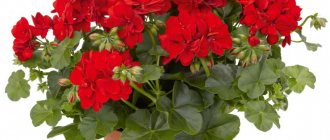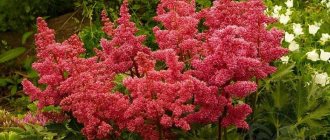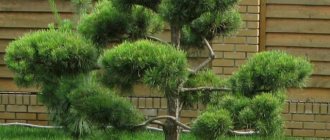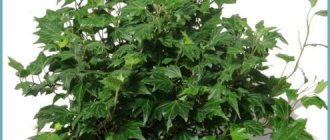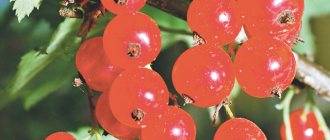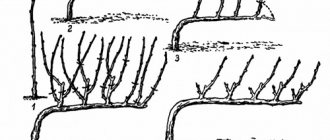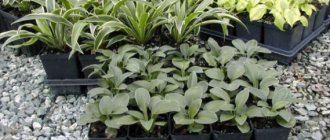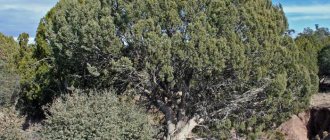The holly is an evergreen shrub, no more than 5 m high, or a tree that can reach a height of 25 m. This plant is sometimes called holly. It belongs to the genus of trees of the Holly family, which has about 500 species. In the wild, holly can be found in Europe, Asia, North America and the Balkan Peninsula, in latitudes with tropical and temperate climates.
Since ancient times, holly has been cultivated as an ornamental plant, which is used for landscaping gardens, parks and plots. In addition, holly can not only decorate the garden, but also have a positive effect on your body. Due to its healing composition, some types of this shrub are used in traditional Chinese medicine.
Types of holly
Science knows more than 500 species of plants of the holly genus. These can be shrubs, trees or vines. Common and Paraguayan holly are widely used in folk medicine; we will talk about them further.
Holly or common holly
It is an evergreen tree with a height of 10 to 25 m. The diameter of its trunk is about 50-80 cm. It has smooth gray bark and alternate, elliptical, shiny leaves of a dark green color. The edges of the leaves are wavy-curved and jagged. The fruits are red, spherical drupes. The tree blooms in May-June, and bears fruit from September to almost February.
In folk medicine, holly leaves are used to treat colds, pneumonia, cough, and bronchitis. In addition, products based on them help with dropsy, gout and arthritis. Its berries are poisonous, but in moderation they have a mild laxative effect, and compresses from the bark help relieve pain.
Paraguayan holly (Paraguayan tea)
It is an evergreen shrub or low tree with smooth, light-colored bark and dense wood. As a rule, these trees do not grow higher than 15 m. They have beautiful glossy leaves with jagged edges. The fruits are drupes with a diameter of 5-6 mm.
The spreading branches of the tree form a crown, shaped like a pyramid. Decorators use cultivated specimens of this plant for landscaping gardens. They are pruned and formed into neat, low bushes. This crop grows in Paraguay, Argentina, Brazil and Uruguay.
How to brew correctly
You can prepare Kudin by pre-soaking it in cool water or by standard brewing. The first method helps to save more nutrients. It is necessary to soak a couple of branches of Kudin in cool water, when the leaves open, they need to be transferred to a cup and filled with well warm water, the drink needs to be infused for about 5 minutes. You can brew tea in the usual traditional way. To do this, you first need to warm up the brewing container by first pouring boiling water over it. Next, you need to take half a twig of Kudin (or one teaspoon of dry tea leaves), put it in a heated container, pour 250 ml of water at a temperature of 40-50 degrees (you cannot use water with a higher temperature, this will ruin the drink). The first brew is drained to wash away dust and dirt from the leaves. Pour water over the tea again and let steep for 3-4 minutes.
Chemical composition of the plant
As a result of numerous scientific studies, the following were discovered in the composition of holly:
- vitamins A, B, E, C;
- resins, choline;
- organic acids;
- purine alkaloids;
- tannins;
- hydrochloric acid;
- bitterness, saponins;
- minerals: potassium, manganese, iron, magnesium, silicon, sodium;
- cellulose.
The fruits contain ylexanthin and rutin, which are coloring substances.
Useful properties of holly
- Holly preparations have antiseptic, diuretic, tonic, antipyretic and diaphoretic properties.
- In folk medicine, parts of the plant are used to prepare expectorants for bronchitis, cough and tuberculosis.
- Decoctions from the ground parts of the bush are recommended for the treatment of depression and neuroses. They are able to suppress the production of adrenaline, which, in turn, improves sleep, relieves stress and emotional imbalance.
- Compresses based on a decoction of holly bark help get rid of severe pain. They are used to treat fractures and sprains, as a pain reliever.
- The components contained in the plant actively saturate the blood with oxygen and are used to prevent the occurrence of cardiovascular diseases.
- Products based on it help with dropsy, fever and colic.
- Science knows of cases where holly berries were used as an emetic and laxative.
Beneficial properties of Paraguayan holly leaves
Dried leaves of the Paraguayan holly have long been used to prepare a drink called mate. This tea is a traditional drink of Latin Americans. It has a tonic, refreshing, strengthening and relaxing effect.
The substance matein, which is contained in the drink, is an alternative to caffeine. However, it does not cause body reactions such as high blood pressure, rapid heartbeat and nervous tremors. Mate is recommended for use as a remedy that:
- Relieves physical and psychological stress.
- Normalizes blood pressure.
- Saturates the body with essential vitamins and microelements.
- It has a positive effect on the digestive tract and improves metabolism.
- Increases performance.
- It is an antioxidant and slows down the aging process of body cells.
How to make mate tea
Traditionally, the drink is drunk from special vessels called calabash. They are carved from small pumpkins - mati. The top of the pumpkin is cut off, the pulp is removed, and then the resulting vessel is thoroughly dried. It is believed that calabash retains all the beneficial properties of mate.
Recipe: Dry crushed Paraguayan holly leaves are poured into a calabash and poured boiling water over it. The finished tea is not stirred and is drunk using a bombilla - a special straw that traps the tea leaves. After emptying the container, the drink can be brewed from the remaining tea leaves 2-3 more times, adding hot water to the calabash.
Description
Kudin has many varieties, the most common are twisted, knitted, sheet, spiral and pressed. The shape of the preparation does not affect the quality of the prepared tea. Small young leaves are considered the most valuable; they, unlike large mature leaves, have bright taste properties and a high content of useful substances. When brewing such tea, the infusion turns out translucent, with a greenish or bright yellow tint. The aroma clearly shows the bitterness of herbs, the taste is bitter and tart, with a sweetish aftertaste.
Use in folk medicine
- For pulmonary inflammation, bronchitis and dry cough, a decoction of the leaves of the plant will help: 3 tbsp. l. dry, crushed raw materials are poured with 750 ml of clean water and sent to low heat. When the liquid boils, cook it until the volume is reduced by half. The finished broth is removed from the heat and filtered. It is drunk no more than 4 times a day, 1/3 cup. To enhance the effect of treatment, you can add crushed ivy wood to the decoction.
- To treat dropsy and fever, use an infusion of fresh leaves: 2 tbsp. l. crushed Paraguayan holly leaves are poured into 250 ml of boiling water. Cover the container with a lid and leave for at least 1 hour. Then the product is filtered and drunk three times a day, 50 ml before meals. To prevent the development of complications after illness, take a decoction of primrose, which is extremely rich in ascorbic acid.
- To strengthen the heart muscle, blood vessels and prevent the development of atherosclerosis, prepare an alcohol tincture: chop fresh holly leaves, measure 3 tbsp. l. raw materials, place it in a glass vessel and fill it with alcohol in a ratio of 1:5. Infuse the medicine at room temperature in a dark place for 14 days. Strain the finished product and take it according to the “slide” system: start with 1 drop, gradually reaching 25, and then reduce the dosage in the reverse order.
- In case of a fracture or sprained ligaments, to relieve pain and speed up healing, it is recommended to make compresses from a decoction of the bark: 50 g of crushed dry raw material, pour 300 ml of water, bring to a boil and cook for 30 minutes. Then cover the container with a lid and leave the product to infuse for 1 hour. Strain the broth and make compresses from it using a bandage or gauze. Apply this compress to the affected areas in the morning and evening for 30 minutes. Parmelia infusion is also famous for its excellent healing effect.
Care
In the first 2 seasons, the soil must be moistened 1-2 times a week. In the future, the irrigation regime is adjusted in accordance with the amount of spring, summer and autumn rains. Overmoistening, as well as lack of moisture, should not be allowed, as this can lead to rotting or drying out of the root system and shoots. In hot, dry weather, you can additionally spray the crown.
Holly should be fed periodically by adding fertilizer to the soil . In the spring, before the start of the growing season, it is recommended to add compost, combining it with complex mineral compounds. Throughout the warm season, plants are fertilized twice a month. They use any organic substances, including rotted mullein, bird droppings, and mineral supplements: phosphorus, potassium.
Weeds are pulled out, tree trunk circles are regularly loosened to a depth of about 5 cm. To prevent aphids, bushes are treated with insecticides.
Sanitary pruning of branches is carried out annually, frozen and diseased shoots are removed . Decorative pruning is done only after the trees reach 4–5 years of age.
It is advisable to insulate the holly roots for the winter. To do this, they can be mulched with a thick layer of leaves or sawdust. In severe frosts, the crowns are completely covered with burlap or agrofibre.
Contraindications
Holly contains alkaloids, which are also toxic substances. Before starting any treatment, it is recommended to consult a specialist. Certain categories of people are not recommended to use holly for medicinal purposes.
Holly berries are mildly poisonous, so they are consumed only in cases of extreme necessity. If there are pronounced symptoms of poisoning, therapy should be stopped immediately, gastric lavage should be performed and medical help should be sought.
Some species of this plant are poisonous, so the use of such raw materials for medicinal purposes is contraindicated. These include:
- pregnant women;
- children and elderly people;
- patients with individual intolerance.
Collection and production
The most valuable varieties of Kudin are made from leaves that were collected from the Yellow Mountain in Sichuan Province. The collection of raw materials is carried out manually, mainly in the spring months, when full green leaves appear. The production technology is very similar to that of regular green tea. After the leaves have been collected, they are slightly withered and rolled well. They are then dried in open and well-ventilated areas under the open sun for several days. After this period, the leaves are sorted by size and stage of readiness, and then sent for packaging. The oxidative process in this case is practically absent, therefore Kudin is classified as a lightly fermented tea.
Preparation of raw materials from plants
Leaves, bark and young shoots of holly are harvested for medicinal purposes. Less commonly, berries and roots are used in traditional medicine recipes. Leaves are collected in spring or early summer. They are dried in the open air under a canopy, spread out in a thin layer on paper.
Paraguayan holly leaves, from which mate is made, are dried with hot air in special dryers at temperatures up to 60 degrees. The dried raw materials are crushed and stored in glass containers. For traditional mate, crushed leaves are used along with natural dust.
The bark and branches of the plant are dried in a well-ventilated, dry room. They are stored in linen bags for about 1 year, and then crushed into powder. Raw materials prepared in this way retain all their beneficial properties.
Did you know about the medicinal properties of holly? Tell us about it in the comments and share your recipes with everyone.
Growing
Bonsai pots are chosen to grow Hollies at home in the form of miniature compositions. Their dimensions should be proportional to the height of the tree.
To independently obtain a plant, you can use all propagation methods, but each of them has certain pros and cons. Seeds are the most reliable way to grow. They take a long time to germinate, but the seedlings obtained from them are the best. Layerings also take a long time to take root, which gardeners do not always like. Quick results can be obtained by rooting annual cuttings. They are planted in July-August in loose nutrient soil and covered with glass or film. In the spring of next year, the transparent coating is removed from the container with young seedlings. However, it should be borne in mind that the rooting result will not be one hundred percent.
Hollies are replanted at home, first annually, then once every two years. Each time this procedure is carried out, it is recommended to remove about a third of the root mass.
To give the required shape, new shoots and branches that grow are regularly pruned, and buds that begin to develop are pinched.
During the warm season, Holly bonsai requires regular fertilizing with slow-soluble organic fertilizers. In spring and summer they are added in large quantities. In autumn, the dosage is reduced, but does not stop.

